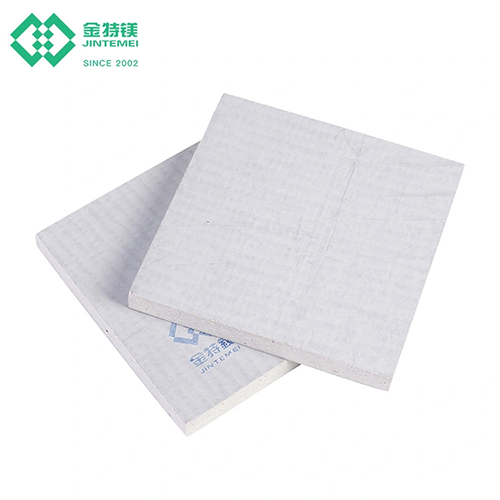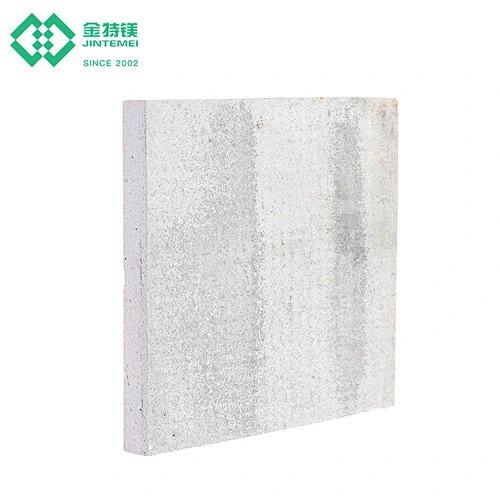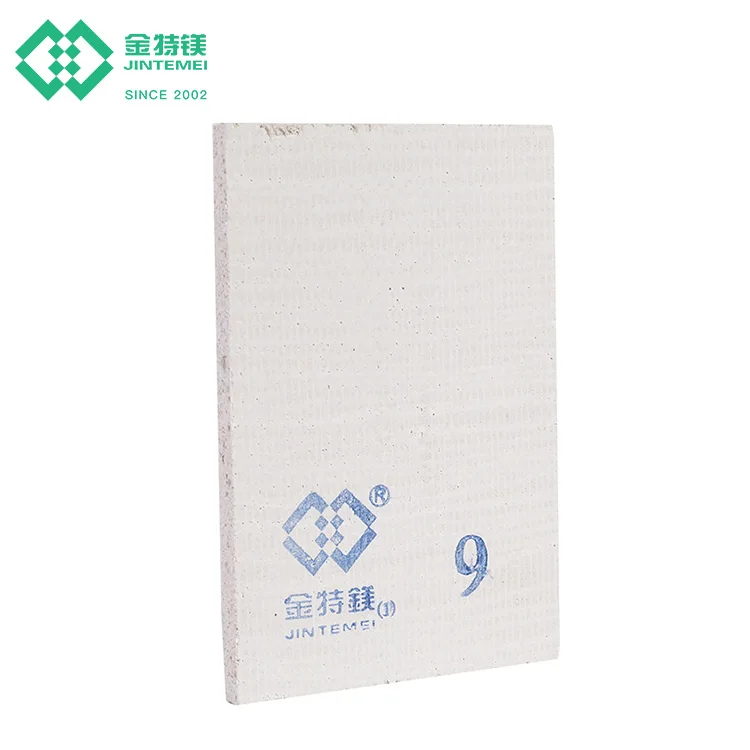Enhancing Building Safety with Fireproof Wall Panels
Understanding Fireproof Wall Panels and Their Role in Building Safety
Core Materials: Magnesium Oxide and Fireproof Construction
The core materials in fireproof wall panels are fundamental to their effectiveness. Among these, Magnesium Oxide (MgO) is a standout component due to its impressive thermal resistance. MgO's chemical properties, such as its high melting point and ability to form a stable, protective layer when exposed to fire, make it an ideal choice for fireproof construction material. Its capability to endure extreme conditions without deteriorating ensures that structures remain safeguarded during fire incidents.
Magnesium Oxide not only forms a fire-resistant barrier but is also recognized for meeting rigorous industry standards and certifications. For instance, MgO panels often adhere to standards such as ASTM E136, which attest to their exceptional fireproof qualities. These certifications provide assurance to builders and developers about the reliability of MgO as a primary material in enhancing building safety against fire hazards.
How Fire Resistance Mechanisms Protect Structures
Fireproof wall panels are engineered to protect structures through several mechanisms. Firstly, they provide crucial insulation from heat, which helps in preventing the spread of flames and contain smoke. The ability to limit the exposure to intense heat and restrict flame spread is paramount in preserving the integrity of a building during a fire. Additionally, well-designed fireproof wall boards function to keep smoke contained, reducing potential harm to individuals and damage to assets within a structure.
The effectiveness of these panels is further enhanced by the use of advanced construction methods and innovative designs. By incorporating fireproof wall boards strategically, buildings can adhere to stringent safety measures and codes. Research and studies on fire safety emphasize the importance of such measures in reducing casualties and property damage during fire events. Statistical data from fire safety reports reinforce the efficacy of these panels in maintaining compliance with building codes and enhancing overall safety.
Key Features of High-Performance Fireproof Wall Panels
Fireproof Insulation Board Properties
Fireproof insulation boards are vital components that enhance building safety and energy efficiency. These boards possess key features such as a high R-value, exceptional thermal performance, and durable material composition that contribute to their effectiveness. For instance, the R-value measures the thermal resistance of the board, showcasing its capability to limit heat transfer. This property is essential in maintaining comfortable indoor temperatures and reducing energy consumption. Moreover, fireproof insulation boards offer superior thermal performance compared to traditional materials, making them ideal for various building environments. Research studies have consistently demonstrated their efficacy in improving energy efficiency while complying with fire safety standards. By integrating these boards into construction, buildings can achieve heightened protection against fire hazards and ensure sustainable energy use which aligns with modern architectural demands.
Structural Integrity and Smoke Containment
Fireproof wall panels play a crucial role in maintaining structural integrity during fire events while effectively containing smoke. These panels are designed to withstand high temperatures, preventing structural failure which can pose significant risks to occupants. Additionally, they reduce the infiltration of smoke, a leading cause of fatalities during fires, thereby enhancing safety measures and evacuation protocols. Evidence from fire safety regulations underscores the importance of effective smoke containment systems, especially in commercial and residential buildings. By limiting smoke entry, fireproof panels ensure that escape routes remain clear, facilitating swift and safe evacuations. Fire safety experts and research indicate that buildings equipped with reliable smoke containment solutions minimize exposure to harmful toxins like carbon monoxide, thereby reducing potential health risks to occupants. Implementing fireproof panels is thus a strategic approach to strengthening the overall resilience and safety of buildings against fire hazards. It aligns with comprehensive fire prevention strategies that prioritize structural soundness and occupant safety.
JINTEMEI Magnesium Oxide Fireproof Boards: Advanced Safety Solutions
Refractory Heat-Resistant MGO Magnesium Oxide Board
JINTEMEI's MGO Magnesium Oxide boards are distinguished by their exceptional refractory properties and heat resistance, making them ideal for applications in demanding environments. Featuring a composition that includes MgO and MgSO4, these boards are designed to withstand high temperatures without burning, emitting black smoke, or releasing poisonous gases. This makes them particularly suitable for use in industrial buildings where safety regulations are paramount. Certified for their compliance with fire safety standards, these boards provide a reliable solution for environments where heat resistance is critical. They are available in various sizes and thicknesses to cater to diverse construction needs.

Grooved MGO Wall Insulation Board for Noise Reduction
The grooved MgO wall insulation boards from JINTEMEI provide a remarkable combination of fire protection and acoustic performance. Their unique design not only offers protection against fire hazards but also significantly contributes to soundproofing, making spaces more comfortable for occupants. By dampening noise effectively, these boards transform living and working environments into tranquil havens, especially in busy urban areas. Comparative studies highlight the exceptional noise reduction capabilities of these systems, surpassing traditional wall materials in terms of sound dampening and enhancing overall indoor comfort.

High-Bending Strength Fireproof Panel for Partitions
JINTEMEI's high-bending strength fireproof panels are engineered to provide structural advantages in spaces requiring robust partitioning solutions, such as commercial offices and residential units. With impressive bending strength and impact resistance, these panels are designed to withstand physical stresses while preserving their fire safety attributes. Their availability in custom sizes makes them adaptable to various design needs in construction. Data indicate their superior performance in maintaining integrity during impact, which is crucial in maintaining safety in partitioned environments.

Advantages of Fireproof Wall Panels in Modern Construction
Code Compliance and Hazard Mitigation
Fireproof wall panels are a crucial component in ensuring that buildings meet local and national fire safety codes. By adhering to these standards, builders and property owners can significantly reduce liability risks associated with fire hazards. The implementation of these panels in commercial buildings can be seen in various real-world case studies, which highlight their effectiveness in maintaining safety compliance. Statistics show a marked reduction in fire-related incidents in buildings equipped with fireproof materials, often minimizing damage and enhancing the overall safety of the premises. These panels do not only serve as a compliance tool but also as a proactive measure in hazard mitigation.
Thermal Efficiency and Long-Term Durability
Fireproof wall panels provide notable thermal efficiency benefits, contributing to long-term energy savings. By insulating the building, these panels help to maintain consistent temperatures, reducing the need for excessive heating or cooling. Their durability is underscored by resistance to moisture, rot, and pest invasion, factors that commonly shorten the lifespan of traditional building materials. Studies on lifecycle assessments support the superiority of fireproof materials over conventional options, evidencing their prolonged efficacy and reduced maintenance needs. This equates to cost savings and less frequent replacement, making them a valuable investment in modern construction projects.
Selecting Fireproof Wall Panels: Critical Considerations
Fire Rating Standards and Application-Specific Requirements
Understanding fire rating standards is crucial when selecting fireproof wall panels for distinct applications. Fire ratings, such as Class A, B, and C, determine a material's non-combustibility and flame spread properties, ensuring they meet safety codes and performance criteria. For instance, Class A materials boast the highest resistance to flame spread and are often required in high-risk settings. Different building types, like residential, commercial, and industrial structures, necessitate unique fire ratings based on occupancy, usage, and local regulations. For example, a healthcare facility would require higher fire resistance standards due to its vulnerable occupant type compared to an office building.
Builders must be aware of application-specific requirements when choosing fireproof panels. Such requirements may involve adhering to stringent building codes for sensitive environments like schools or hospitals, where fireproof wall panels must comply with the highest safety standards. Therefore, a comprehensive understanding of the local and national regulations is essential for correct product selection. By meeting the application-specific requirements and appropriate fire rating standards, builders can enhance both safety and compliance in their projects.

 EN
EN








































